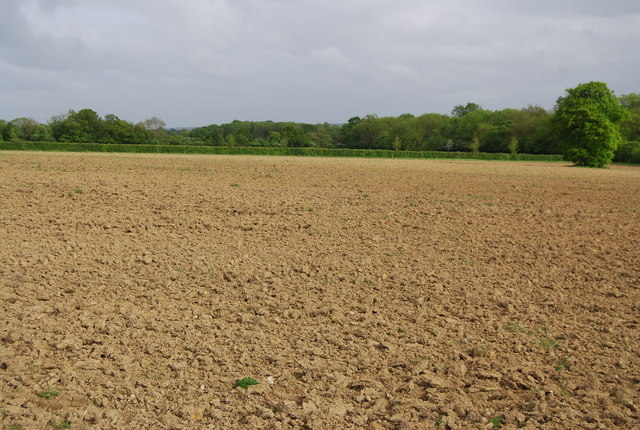Fallow on:
[Wikipedia]
[Google]
[Amazon]
 Fallow is a
Fallow is a
How to prevent fallow syndrome in corn
Minnesota Crop News, March 16, 2020
 Fallow is a
Fallow is a farming
Agriculture encompasses crop and livestock production, aquaculture, and forestry for food and non-food products. Agriculture was a key factor in the rise of sedentary human civilization, whereby farming of domesticated species created ...
technique in which arable land
Arable land (from the , "able to be ploughed") is any land capable of being ploughed and used to grow crops.''Oxford English Dictionary'', "arable, ''adj''. and ''n.''" Oxford University Press (Oxford), 2013. Alternatively, for the purposes of a ...
is left without sowing
Sowing is the process of planting seeds. An area that has had seeds planted in it will be described as a sowed or sown area.
Plants which are usually sown
Among the major field crops, oats, wheat, and rye are sown, grasses and legumes are ...
for one or more vegetative cycles. The goal of fallowing is to allow the land to recover and store organic matter
Organic matter, organic material or natural organic matter is the large source of carbon-based compounds found within natural and engineered, terrestrial, and aquatic environments. It is matter composed of organic compounds that have come fro ...
while retaining moisture
Moisture is the presence of a liquid, especially water, often in trace amounts. Moisture is defined as water in the adsorbed or absorbed phase. Small amounts of water may be found, for example, in the air (humidity), in foods, and in some comme ...
and disrupting pest life cycles and soil borne pathogen A soil borne pathogen is a disease-causing agent which lives both in soil and in a plant host, and which will tend to infect undiseased plants which are grown in that soil. Common soil borne pathogens include ''Fusarium'', '' Pythium'', '' Rhizocto ...
s by temporarily removing their hosts. Crop rotation
Crop rotation is the practice of growing a series of different types of crops in the same area across a sequence of growing seasons. This practice reduces the reliance of crops on one set of nutrients, pest and weed pressure, along with the pro ...
systems typically called for some of a farmer's fields to be left fallow each year.
The increase in intensive farming
Intensive agriculture, also known as intensive farming (as opposed to extensive farming), conventional, or industrial agriculture, is a type of agriculture, both of arable farming, crop plants and of Animal husbandry, animals, with higher levels ...
, including the use of cover crop
In agriculture, cover crops are plants that are planted to ground cover, cover the soil rather than for the purpose of being harvested. Cover crops manage soil erosion, soil fertility, soil quality, water, weeds, Pest (organism), pests, diseases ...
s in lieu of fallow practices, has caused a loss of acreage of fallow land, as well as field margins, hedges, and wasteland. This has reduced biodiversity
Biodiversity is the variability of life, life on Earth. It can be measured on various levels. There is for example genetic variability, species diversity, ecosystem diversity and Phylogenetics, phylogenetic diversity. Diversity is not distribut ...
; fallows have been the primary habitat for farmland bird populations.
Fallow syndrome
Fallow syndrome is when a crop has insufficient nutrient uptake due to the lack of arbuscular mycorhizae (AM fungi) in the soil following a fallow period. Crops such as corn that are prone to fallow syndrome should not follow a period of fallow, but instead should follow acover crop
In agriculture, cover crops are plants that are planted to ground cover, cover the soil rather than for the purpose of being harvested. Cover crops manage soil erosion, soil fertility, soil quality, water, weeds, Pest (organism), pests, diseases ...
which is a host for AM fungi, such as oats or other small grain crops. The presence of ''any'' plant roots, including weeds, can reduce occurrence of fallow syndrome. Nowadays, agricultural fields are routinely planted with cover crops to prevent erosion, keep down weeds, provide a green manure
In agriculture, a green manure is a crop specifically cultivated to be incorporated into the soil while still green. Typically, the green manure's Biomass (ecology), biomass is incorporated with a plow or disk, as is often done with (brown) man ...
, and reduce the risk of fallow syndrome.Minnesota Crop News, March 16, 2020
See also
*Dryland farming
Drylands are defined by a scarcity of water. Drylands are zones where precipitation is balanced by evaporation from surfaces and by transpiration by plants (evapotranspiration). The United Nations Environment Program defines drylands as tropical ...
* Crop rotation
Crop rotation is the practice of growing a series of different types of crops in the same area across a sequence of growing seasons. This practice reduces the reliance of crops on one set of nutrients, pest and weed pressure, along with the pro ...
* Three-field system
The three-field system is a regime of crop rotation in which a field is planted with one set of crops one year, a different set in the second year, and left fallow in the third year. A set of crops is ''rotated'' from one field to another. The tech ...
* No-till farming
* Shifting cultivation
Shifting cultivation is an agricultural system in which plots of land are cultivated temporarily, then abandoned while post-disturbance fallow vegetation is allowed to freely grow while the cultivator moves on to another plot. The period of cul ...
* Shmita
The sabbath year (''shmita''; , literally "release"), also called the sabbatical year or ''shǝvi'it'' (, literally "seventh"), or "Sabbath of The Land", is the seventh year of the seven-year agricultural cycle mandated by the Torah in the Lan ...
References
Rural geography {{Agri-stub